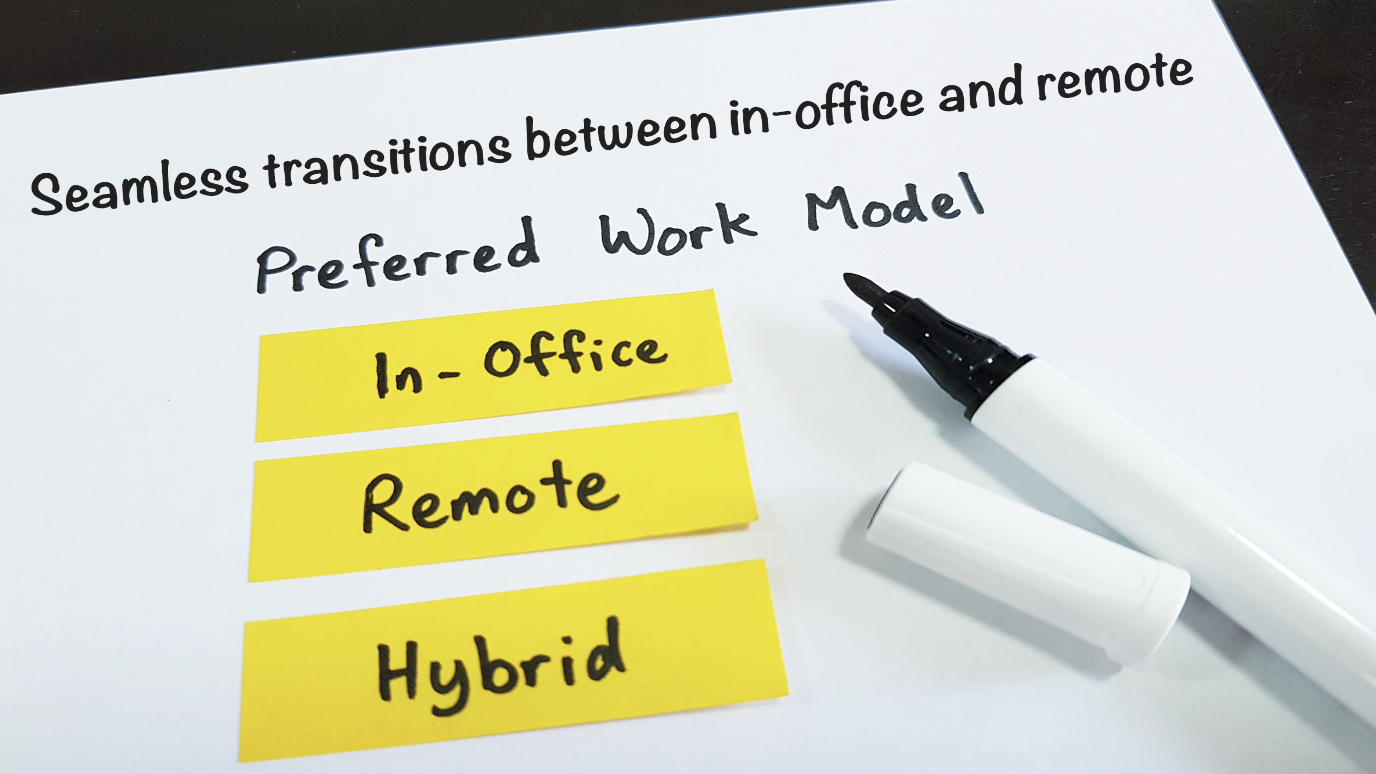The tactics and strategies you use will depend on your pre-pandemic workplace, your industry, and where you are technologically.
The pandemic shattered much of the conventional wisdom surrounding the workplace culture. People are less productive. Team collaboration suffers outside the office. Inside the office is the only place “real work” gets done. Yet every corporate leader shares the same goals. Returning to an office that is safe and healthy. Reconnecting and reinventing how we work together. Renewing and retooling our businesses to ensure they thrive in the next economic disruption.
Return-to-the-office Taskforce
The first step towards a reimagined workplace is creating a return-to-the-office taskforce with corporate leaders and stakeholders from IT, facilities, and HR to plan and coordinate changes to your physical workplace. How you execute that plan could mean the difference between a resilient business ready to embrace change and a company stuck in the past. The reimagined workplace is about the seamless transition from remote work to in-office and hybrid work without jeopardizing anyone’s health or safety and ensuring seamless, effortless productivity, collaboration, and inclusion between virtual and in-person workers.
IT is the Real Driver

"Track what technology, pandemic-driven or otherwise, worked, what didn’t, and what was lacking. Keep the good. Get rid of the rest, including licenses you purchased that went unused."
IT is the real driver of the reimagined workplace. After planning for the right mixture of collaborative and individual workspaces with HR and facilities, you enable the technology that makes it work. Start by auditing and evaluating your building’s infrastructure for any changes you need to make to incorporate video conferencing, digital signage, usage sensors, and touchless technology. Next, assess your network performance against hybrid work demands and prepare for next gen 5G, On-Go, Wi-Fi 6, and SD-WAN technologies that support communications and collaboration applications and devices. Your number one goal is to provide users with seamless transitions between in-office and remote work.
[ Black Box Customer Service Earns 2021 Stevie Award ]
Track what technology, pandemic-driven or otherwise, worked, what didn’t, and what was lacking. Keep the good. Get rid of the rest, including licenses you purchased that went unused. Address technology gaps. Establish a bring your own device (BYOD) policy. Perform safety and software checks on all devices for the proper OS, security patches, critical updates, and password security. And verify that enterprise-wide security measures include VPNs, MFAs, and protection for wireless networks, SD-WAN, and cloud-based communications. Of course, all employees will also need training on using these systems securely. Don’t forget employee device documentation.
What connected building (smart and IoT technology/applications) do you want to use for social distancing and smart building efficiencies? This can include everything from automated reservation systems and occupancy sensors to environmental monitoring and health screening.
[ Black Box Announces Digital Workplace Unified Communications Service ]
For meeting spaces, do you want touchless AV presentation tools, occupancy and light sensors, and automatic post-meeting cleaning notifications. What about environmental and airflow monitoring, contactless devices and sensors at doors, elevators, breakrooms, and restrooms and check-in kiosks with temperature and health-monitoring stations.
Brian Trampler is the senior product manager, Services at Black Box
